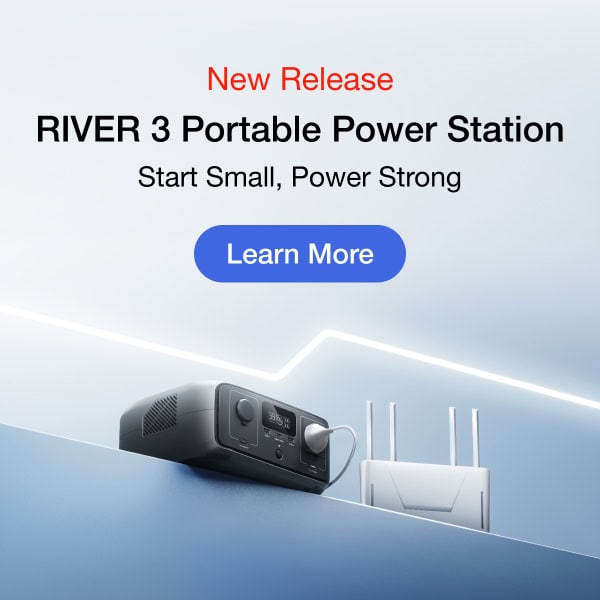In a solar power system, you collect solar energy through panels capable of generating high voltages. The batteries in which you store energy, though, have lower capacities. To regulate the flow through this system, you must convert the voltage as it moves between those two components.
A DC-to-DC battery converter lets you accomplish this by adjusting the voltage up or down. It keeps the separate components from overloading or underperforming. Read on to learn how this technology helps solar power systems function at their best.
What Is a DC to DC Battery Converter?
Solar generators capture energy from sunlight through solar panels, storing that electricity in batteries for future use. A DC-to-DC converter optimises this process.
The batteries operate with a lower voltage than the panels themselves. If you try to push the full voltage straight into the battery, you can damage or degrade the system. In addition, you lose most of the electricity the system generates by pushing through higher voltage than the battery can handle. You risk ineffective system operation if the system delivers less power moving from the battery than your energy generation needs demand.
A DC-to-DC battery converter meets this need by converting one voltage into another. It regulates voltage down from the panels to the battery and boosts the voltage levels moving in the opposite direction.
This regulation helps preserve and maximise your solar power system’s electricity and protects the system components.
Why Do You Need DC to DC Battery Charger?
A DC-to-DC battery charger is similar to the converter in that it uses and modulates a direct current according to your system’s needs. It moves between batteries to balance and maximise the voltage of each battery within a system or provides a backup source to your solar panels to charge your storage batteries.
One reason to have a DC-to-DC charger is that your solar panels may not receive enough sunlight to keep the battery charged. A backup source to charge your battery becomes vital if you have a long run of cloud cover or damage to your panels. You can ensure that your power supply remains interrupted by keeping that backup supply available.
In addition, regulating the charge between batteries in your system can help protect the integrity of each part. Maintaining the proper charge without overloading the batteries keeps the battery functioning at its peak efficiency for longer. Over time, this becomes critical for maintaining your entire solar system and getting the most out of your investment.
How Does a DC to DC Battery Charger Work?
The most commonly understood DC to DC charger is the alternator in your vehicle. When the vehicle is running, the alternator sends a steady direct current to the battery to keep it fully charged. The same technology allows you to run and maintain a charge on an off-grid battery.
If you have a series of batteries stacked in your power system, the DC-to-DC charger regulates the flow among the different batteries. Thus, you can distribute power between batteries or across a group of them, using the direct current power source to ensure all maintain their stored charges.
This kind of backup matters for systems, both large and small. In a smaller system, particularly when you’re on the move, this provides instant electricity for your batteries. It’s a critical backup if your solar panel has not yet captured enough energy.
In a more extensive, multi-battery system, the charger allows you to precisely deliver the voltage that meets each battery’s storage capacity and delivery capability.
How Do Solar Power Systems Work with DC to DC Chargers?
With solar power systems in place, your DC-to-DC charger operates primarily as a backup to your solar panels. The EcoFlow Power Kits are an example of a system that uses DC to DC chargers for more efficient energy management.
In a smaller system, this gives you a reliable backup source or supplement in case your solar panels don’t have time or enough sunlight to charge quickly. You connect the charger to your storage battery, and you can maintain the power supply you need.
Similarly, connecting to your alternator or another DC-to-DC charging supply in a portable system allows you to connect to available power. You can charge your battery without waiting for solar-generated electricity. In a pinch, this can give you the electric boost you need.
Finally, even when you have a more extensive, static set of panels, the DC-to-DC charger can give you a backup power supply in case of a disconnection or an interruption in the solar energy supply. One of the reasons solar works so well as an energy source is that you can store energy for use when the sun isn’t shining. A backup battery or battery stack can provide the assurance that you will not lose power due to a problem with the solar supply.
What Are the Benefits of DC to DC Chargers?
No charging method, and indeed no power source, will be 100 per cent right for every situation. Still, when you combine a DC-to-DC charger with solar power systems, you can achieve several benefits. You can prepare for most scenarios and have peace of mind that if something goes wrong, you have a ready solution.
Power on the Road
Off-grid solar PV panel usage has grown substantially in recent years, with a market expected to hit $5.2 billion by 2030. With the development of flexible and portable solar panels, solar power is easily transportable. You can equip a van or motorhome to travel with a reliable solar energy source, whether for a weekend getaway or a full off-grid lifestyle.
If you are travelling, a DC to DC charger lets you do so with peace of mind, knowing you will have electricity ready wherever you go.
Backup for Bad Weather
A DC-to-DC charger also helps provide a reliable backup for unfavourable weather conditions or climate. Some parts of the country don’t get a lot of sunlight. If you live in a deeply wooded area, you may have limited sun getting through due to your surroundings.
You can plan and arrange your panels for much of this, setting them up for the optimal orientation to maximise your peak sun hours. However, a DC-to-DC charging solution gives you backup when your solar panels can’t convert enough sunlight to electricity.
Convenience and Immediacy
If you drive, you have a readily available DC to DC charging source in your vehicle’s alternator. Connecting to that power source allows you to adapt and distribute that charge between batteries efficiently. Connect through a converter to deliver the voltage you need to get and stay up and running.
DC to DC Battery Charger With MPPT: What You Should Know
A maximum power point tracker, or MPPT, regulates the charge going to and from your solar panels. It helps you optimise the combination of voltage and current to get the most efficient power transfer between your panels and the storage batteries. The benefit here comes through the combination of efficiency and peak energy delivery through your system.
Using an MPPT with your DC-to-DC charger, you also get this benefit through your backup system. The MPPT tracks and regulates the voltage and current at any given time to flow among your solar system components. Setting your backup battery or battery stack up to ensure the optimal delivery helps keep your system functioning at its best without allowing the batteries to overload or underperform.
This setup can be particularly beneficial if you have stacked batteries in your system. The risk you run is leaving one battery carrying more of the storage or delivery load than the others, reducing your efficiency and performance. If your backup battery connects through a DC to DC charger and an MPPT, you can charge at peak efficiency for each battery in your stack at all times. Your system continuously delivers its most efficient and effective power to and from your batteries.
Conclusion
When you invest in a solar power system, you likely have multiple motivations. You may be focused on the environmental benefits, the energy independence you can achieve, or the financial savings you can reach over time through using renewable energy. You may even want to get away from it all and go off-grid, temporarily, or permanently. Solar power gives you the ability to achieve each of these things.
Whatever your motivation for going solar, you need a system that’s ready for anything. A backup power source, with delivery through an MPPT and DC to DC charger, gives you everything you should need to stay up and running.
EcoFlow’s Power Kits and backup battery options provide all the components you need to achieve your solar power goals. With a DC-to-DC battery charger with an integrated MPPT solar and two additional MPPT solar charge controllers, it’s a robust solution for your energy production. Reach out today, and we’ll help you select the right system for your solar power needs.





